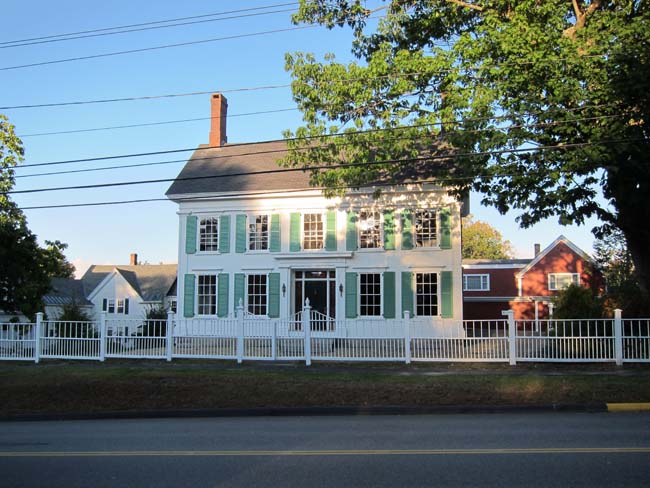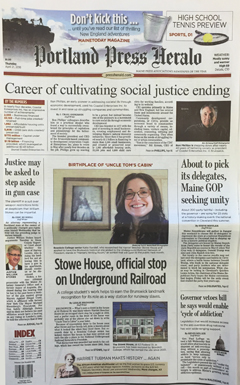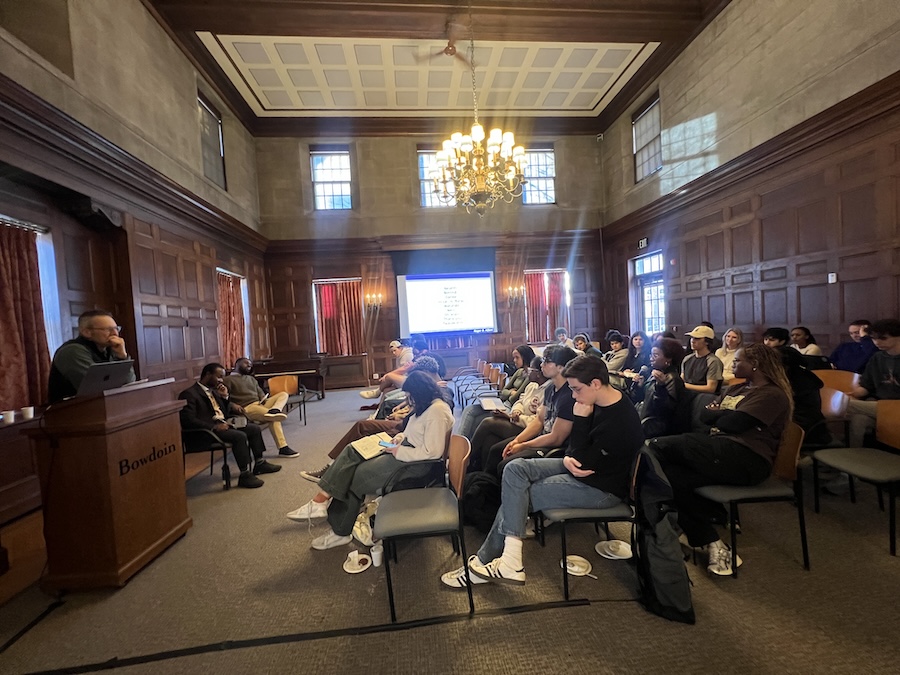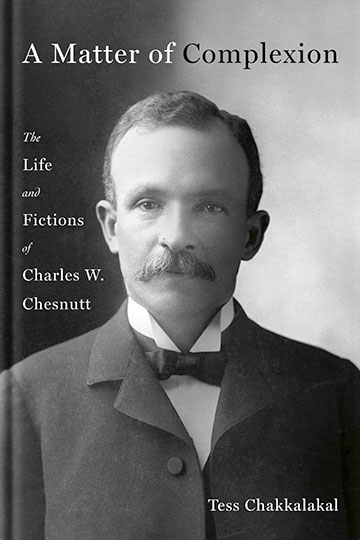Harriet Beecher Stowe House Receives National Distinction, Dedicates New 'Harriet's Writing Room' May 9
By Doug CookThe College-owned Harriet Beecher Stowe House, a National Historic Landmark, adds new chapters to its story with a significant national distinction and the opening of a public space.
The house at 63 Federal Street where Stowe wrote Uncle Tom’s Cabin, the anti-slavery novel that some say helped spark the American Civil War, has been included in the National Underground Railroad Network to Freedom by the National Park Service. See the Stowe website for more information on the house and Harriet’s Writing Room.

The designation recognizes significant contributions to the understanding of the Underground Railroad in American history and is a result of research by Katie Randall ’16, under the guidance of Bowdoin College Associate Professor of Africana Studies and English Tess Chakkalakal.
The Harriet Beecher Stowe House is significant to the Underground Railroad on two fronts: author, lecturer—and freedom seeker—John Andrew Jackson took shelter with the Stowe family in 1850.
Jackson’s stories and scars added fire to Stowe’s anger, which she turned into action by writing her pivotal novel in the house beginning in 1851.
These two events are deeply linked, as the presence of a freedom seeker in the Stowe parlor helped motivate Stowe to write the novel, while the interaction with another literary mind helped Jackson develop a literary voice of his own.
Jackson went on to become a renowned abolitionist lecturer and to write the autobiography The Experience of a Slave in South Carolina.
The Stowe House was witness to their powerful conversations, which emboldened them both to use their literary voices to speak out against slavery, and ultimately have a deep effect on the history of American abolitionism.
“We commend you on your dedication to this important aspect of our history,” wrote Diane Miller, the Network to Freedom’s national program manager, in her letter to the College.
A certificate of acceptance plaque noting the distinction will be displayed inside the Stowe House.
A renovation project in 2015, undertaken in consultation with an historic preservation architect, returned the house to its 1855 appearance while making space for faculty offices.
The building now also houses “Harriet’s Writing Room,” a public exhibit space that commemorates Stowe’s literary legacy with artifacts from the time period—and copies of Uncle Tom’s Cabin. Harriet’s Writing Room will be open to the public Thursday-Saturday, noon-3 p.m., beginning the week of May 9, 2016.
On Monday, May 9, 2016, from 2 p.m. to 4 p.m., the College will host an open house for the campus community to showcase Harriet’s Writing Room and celebrate the Network to Freedom designation. The event, which is free and open to the public, will feature remarks by Chakkalakal, Randall, and Bowdoin College President Clayton Rose.
 The Portland Press Herald tells the story of how senior Katie Randall researched the Harriet Beecher Stowe House as an independent study project and helped get it listed on the Underground Railroad Network of Freedom. Read the article.
The Portland Press Herald tells the story of how senior Katie Randall researched the Harriet Beecher Stowe House as an independent study project and helped get it listed on the Underground Railroad Network of Freedom. Read the article.
Randall was also interviewed for a brief segment that aired on WGME/CBS 13. Watch the clip.



